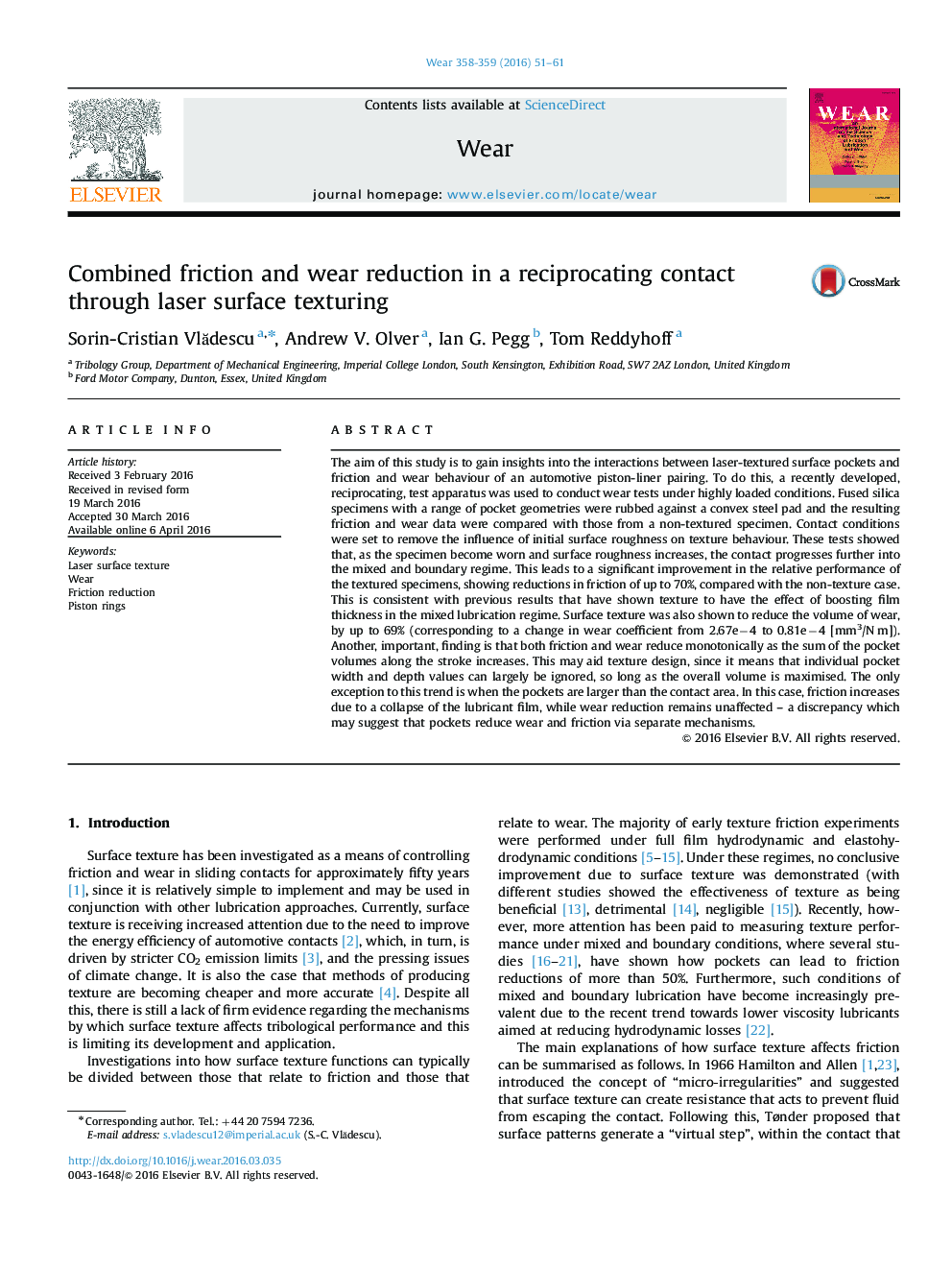| کد مقاله | کد نشریه | سال انتشار | مقاله انگلیسی | نسخه تمام متن |
|---|---|---|---|---|
| 616893 | 1454962 | 2016 | 11 صفحه PDF | دانلود رایگان |
• Pockets reduce friction and wear simultaneously, but by different mechanisms.
• The friction reduction performance of pockets improves as wear increases roughness.
• Friction and wear reduce monotonically as the total volume of pockets increases.
• These results will aid texture design of pocket geometries.
The aim of this study is to gain insights into the interactions between laser-textured surface pockets and friction and wear behaviour of an automotive piston-liner pairing. To do this, a recently developed, reciprocating, test apparatus was used to conduct wear tests under highly loaded conditions. Fused silica specimens with a range of pocket geometries were rubbed against a convex steel pad and the resulting friction and wear data were compared with those from a non-textured specimen. Contact conditions were set to remove the influence of initial surface roughness on texture behaviour. These tests showed that, as the specimen become worn and surface roughness increases, the contact progresses further into the mixed and boundary regime. This leads to a significant improvement in the relative performance of the textured specimens, showing reductions in friction of up to 70%, compared with the non-texture case. This is consistent with previous results that have shown texture to have the effect of boosting film thickness in the mixed lubrication regime. Surface texture was also shown to reduce the volume of wear, by up to 69% (corresponding to a change in wear coefficient from 2.67e−4 to 0.81e−4 [mm3/N m]). Another, important, finding is that both friction and wear reduce monotonically as the sum of the pocket volumes along the stroke increases. This may aid texture design, since it means that individual pocket width and depth values can largely be ignored, so long as the overall volume is maximised. The only exception to this trend is when the pockets are larger than the contact area. In this case, friction increases due to a collapse of the lubricant film, while wear reduction remains unaffected – a discrepancy which may suggest that pockets reduce wear and friction via separate mechanisms.
Journal: Wear - Volumes 358–359, 15 July 2016, Pages 51–61
